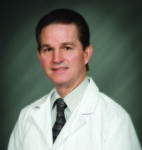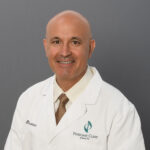Founded eight years ago, the Rheumatology Association of Iowa (RAI) is one of the newer state rheumatology organizations. RAI is a diverse group of approximately 60 rheumatology professionals, including physicians, nurse practitioners, physician assistants, nurses and practice managers.

Dr. Brooks
Michael Brooks, MD, FACP, FACR, a rheumatologist/partner with Physicians Clinic of Iowa, Cedar Rapids, was RAI’s founding president and now serves on the organization’s Board of Directors. Prior to 2014, he says, individual rheumatology practices within Iowa operated without much collaboration. They also lacked the ability to meet as a group and discuss what could be done to improve patient care, the statewide level of practice regulations, and insurance and governmental requirements that ensure patients get the right medication at the right time.
Bogdan Cherascu, MD, MS, a rheumatologist/partner with Physicians Clinic of Iowa, is RAI’s current president. He notes that Iowa, like many states, is faced with the challenge of attracting new rheumatology professionals to the state.
“We have an opening for a rheumatologist here at my practice that we’ve been looking to fill for some time,” Dr. Cherascu says.

Dr. Cherascu
Providing care to rural patients is also challenging because most of Iowa’s rheumatologists practice in larger cities, such as Cedar Rapids, Des Moines and Davenport, says Dr. Cherascu. The University of Iowa Stead Family Children’s Hospital in Iowa City is the only medical center that provides pediatric rheumatology care in the state.
In several rural areas of Iowa, including Charlton and Bloomfield, nurse practitioners have started to see patients two to three times each month to fill the gap between supply and demand for rheumatologists.
“I have patients who travel two hours to our rheumatology practice,” Dr. Cherascu says. “This can be an especially difficult journey during the winter months.”
A lack of rheumatologists also leads to longer wait times for patients. At his own practice, Dr. Cherascu says new patients typically wait several weeks for an appointment, while other rheumatology practices are booking appointments several months in advance.
Within the state, Dr. Cherascu says rheumatologists see a high incidence of rheumatoid arthritis and temporal arteritis cases, as well as complicated gout and osteoarthritis, commonly seen in farmers and farm workers.
Although many rheumatologists have embraced telehealth in the past two years, the technology poses challenges in cases where patients require regular infusions or injections and in rural areas where residents lack access to reliable broadband services.
“It can also be difficult to gauge joint inflammation using telemedicine,” Dr. Cherascu says. “We’ve looked at providing infusion services in rural areas, but it’s critical to have a rheumatology provider on site in the event a patient experiences a severe reaction.”
Collaboration Leads to Better Outcomes
RAI’s annual meetings offer Iowa rheumatologists the ability to come together and discuss best practice options, as well as how to operate their practices more efficiently.
The organization’s 9th annual meeting is scheduled for Feb. 24–25 at The Hotel at Kirkwood Center in Cedar Rapids. Dr. Cherascu says the event will give rheumatology professionals the opportunity to meet in person and discuss policy and the complexities of running a practice, and to enjoy networking with their colleagues.
“Our scientific sessions are always very well-attended. We also offer legislative updates and the chance for our members to hold roundtable discussions with representatives from the Arthritis Foundation, as well as lobbyists representing the rheumatology field,” Dr. Cherascu says.
Although the RAI is still finalizing its list of speakers for this year’s conference, Dr. Cherascu says the organizers hope to secure a speaker to discuss rheumatology concerns during pregnancy.
Advocacy will also be an important theme at the annual meeting.
“For the past eight years, RAI has hosted excellent educational meetings, allowing our members to collaborate in terms of advocacy at the state level for both their patients and practices,” Dr. Brooks says.
Among the RAI’s advocacy efforts, the organization has succeeded in getting step therapy and prior authorization bills passed in the Iowa legislature. It is presently working on a bill for nonmedical switching and is considering including a bill to regulate copay accumulators and similar insurance plans that negate the effect of copay assistance offered to patients requiring expensive rheumatologic medications. Others under development include bills to regulate the practice of white bagging and brown bagging requirements for infusion therapy patients.
“I’ve been involved in advocacy both by going to Des Moines for face-to-face communication with legislators and inviting state senators to come to our meetings to discuss issues pertaining to rheumatologists,” Dr. Brooks says. “In addition, I’ve been involved with the Coalition of State Rheumatology Organizations (CSRO) at a national level as a member of [its] board and have been involved with advocacy in Washington, D.C., on a yearly basis through that organization.”
Dr. Brooks notes that, although technology doesn’t replace face-to-face communication, it has made it easier for rheumatologists in Iowa to accomplish legislative goals and interact with other groups that can help make patient care more easily and efficiently accomplished.
“As an example, Madelaine Feldman, MD, president of CSRO, and I are doing a web seminar with members of the Iowa legislature early next month over issues of pharmacy benefit managers and nonmedical switching for rheumatology practices,” Dr. Brooks says. “I started practicing in 1985, when many of the medicines we have today weren’t available, and I remember what it was like then to control the activity of the disease. Only by being involved with advocacy can we combat this.”
Linda Childers is a health writer located in the San Francisco Bay Area.